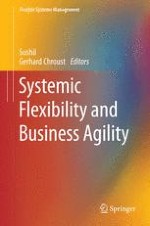2015 | OriginalPaper | Chapter
20. TISM-Based Model to Evaluate the Flexibility Index of a Supply Chain
Authors : R. K. Singh, P. B. Sharma
Published in: Systemic Flexibility and Business Agility
Publisher: Springer India
Activate our intelligent search to find suitable subject content or patents.
Select sections of text to find matching patents with Artificial Intelligence. powered by
Select sections of text to find additional relevant content using AI-assisted search. powered by
